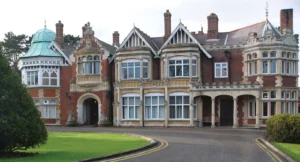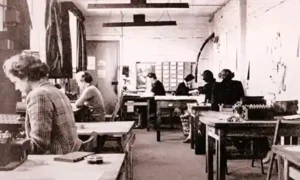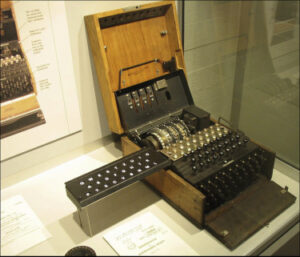During World War II, Bletchley Park emerged as a pivotal intelligence outpost, heralding the era of codebreaking that reshaped the course of history. At the heart of this iconic site were the brilliant minds, many of whom were women, who played a crucial role in deciphering enemy codes and intercepting vital information. In this article, we delve into the world of the female codebreakers of Bletchley Park, exploring their untold stories and the significant contributions they made to Allied intelligence efforts during one of humanity’s darkest moments.


1. Breaking the Barriers:
In an era marked by gender bias and societal restrictions, Bletchley Park provided a unique platform for female codebreakers to showcase their talents. Facing both gender and discrimination obstacles, women like Joan Clarke, Mavis Batey, and Margaret Rock contributed significantly to the success of Bletchley Park. Their exceptional skills in logic, mathematics, linguistics, and problem-solving enabled them to crack complex codes and ciphers, often faster than their male counterparts.
2. The Enigma Machine and Beyond:
Most notably, the contributions of female codebreakers extended to decoding the infamous Enigma machine, used by the German military to transmit secret messages. Women such as Dorothy “Dilly” Knox, Rozanne Colchester, and Margaret Copeland excelled in deciphering the codes produced by this sophisticated encryption device. By cracking Enigma, these codebreakers provided Allied forces with invaluable knowledge of enemy plans, troop movements, and submarine locations.

3. Intelligence Unit Roles:
The contributions of women in Bletchley Park were not limited to codebreaking alone. They played a significant role in various intelligence units, including Hut 3 and the Testery. These talented individuals meticulously analyzed decrypted messages, identified patterns, and interpreted the intelligence contained within. They worked in close collaboration with other codebreakers, intelligence officers, and military personnel to turn raw information into actionable intelligence.
4. Language Specialists:
Another crucial aspect of the female codebreakers’ work at Bletchley Park was their excellence as linguists. Many women were fluent in multiple languages, including German, Italian, Japanese, and Russian. Their linguistic expertise enabled them to decipher intercepted messages in foreign languages and provided valuable insights into enemy strategies and activities.
5. Maintaining the Secret:
The female codebreakers of Bletchley Park were entrusted with a significant responsibility: maintaining the utmost secrecy regarding their work. Despite the immense pressure, they diligently upheld confidentiality, understanding the impact that any breaches or leaks could have on the war effort. Their commitment to hiding their involvement allowed Bletchley Park to act as a well-kept secret, giving the Allies the upper hand in intelligence gathering.
Conclusion:
The vital role played by female codebreakers at Bletchley Park during World War II cannot be overstated. These brilliant women significantly contributed to Allied intelligence efforts, breaking codes and intercepting enemy messages that saved countless lives and aided in the ultimate victory over the Axis powers. The perseverance, ingenuity, and intellect demonstrated by the female codebreakers of Bletchley Park shattered societal norms and served as a turning point for gender equality in intelligence and technology fields. Their legacy continues to inspire generations, reminding us of the untold narratives of remarkable women who changed the course of history.

